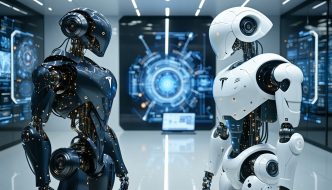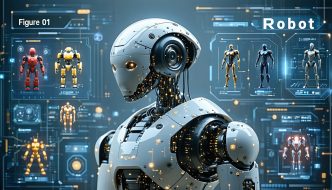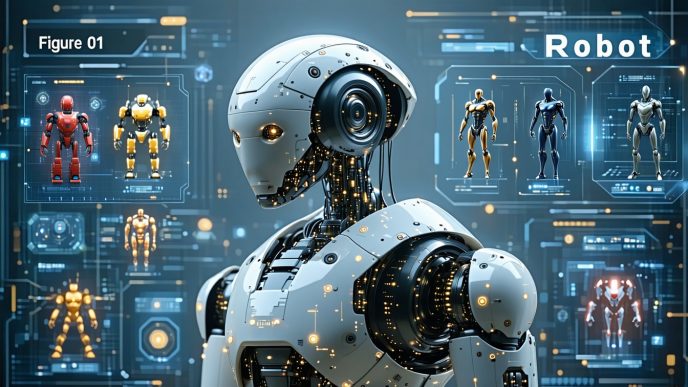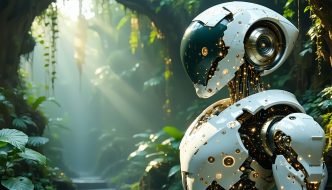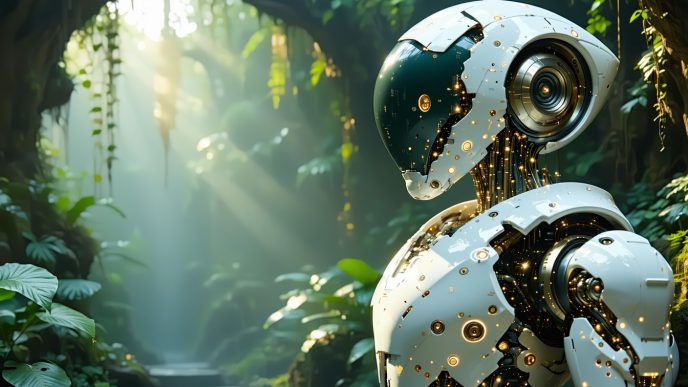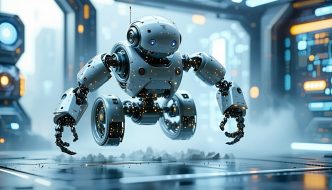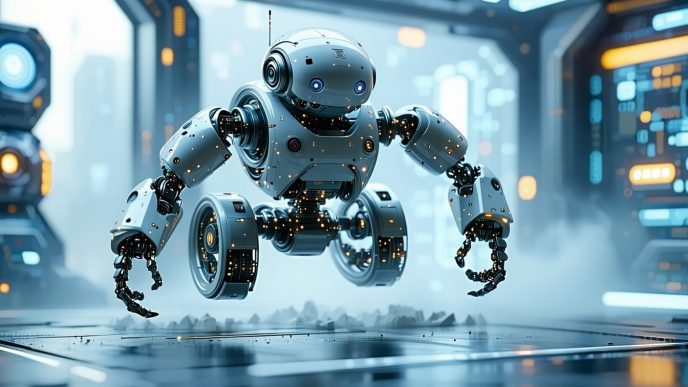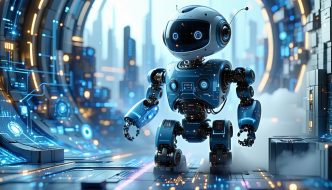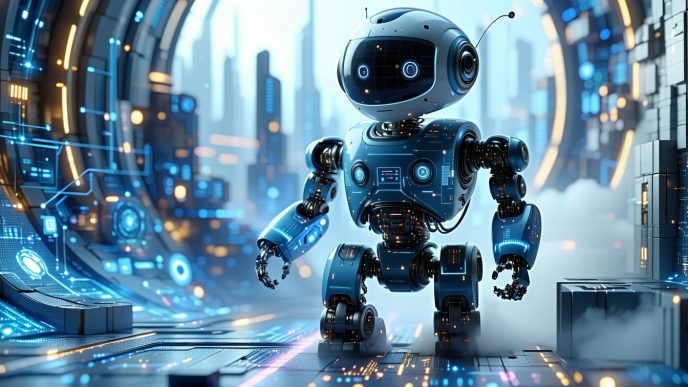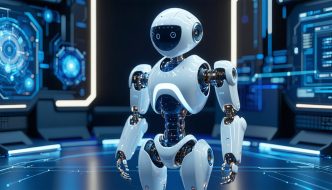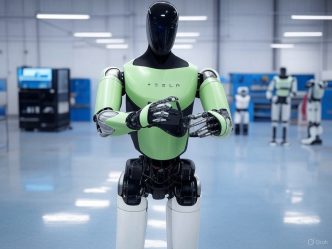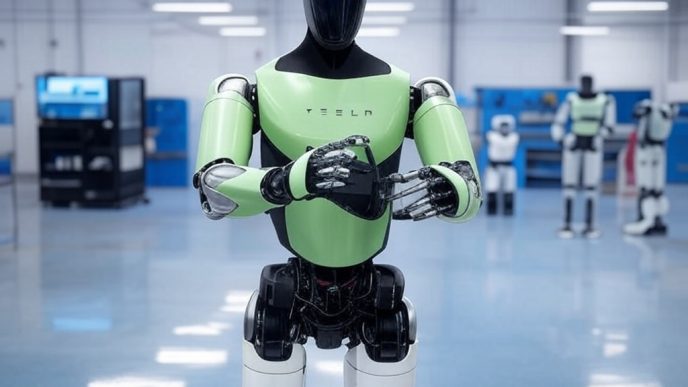Introduction to Humanoid Robots
Humanoid robots are designed to imitate human appearance and behavior, making them an intriguing area of study and application in robotics. Two leading examples in current technology are Tesla Optimus and Figure 01. Understanding the importance of different humanoid robot types offers insights into their unique capabilities and potential applications.
Importance of Humanoid Robot Types
Humanoid robots serve various functions across multiple sectors, including healthcare, home assistance, and education. The ability to mimic human interactions makes them particularly valuable in roles where empathy and understanding are key. Identifying the strengths and weaknesses of different humanoid robots helps individuals and organizations determine which models suit their specific needs.
-
Applications in Daily Life
- Robots like Tesla Optimus are designed for tasks such as household chores and caregiving.
- Figure 01 focuses on emerging fields like warehousing and logistics.
-
Advancements in Technology
-
Progress in AI and machine learning enhances the capabilities of humanoid robots, enabling them to adapt to their environments better.
Tesla Optimus vs. Figure 01 Overview
In comparing Tesla Optimus to Figure 01, significant differences emerge in their design, functionality, and intended applications. Below is a brief comparison of key characteristics.
| Feature | Tesla Optimus | Figure 01 |
|---|---|---|
| Design Type | Human-like, versatile | Specialized for industrial use |
| Primary Aim | Daily assistance and tasks | Operating in logistics |
| Level of Autonomy | Semi-autonomous, requires supervision | Fully autonomous capabilities |
| Interaction | Human-like interaction | Task-focused communications |
This overview illustrates the contrasting approaches of Tesla Optimus and Figure 01 within the realm of humanoid robotics. For those interested in learning more about other humanoid robots and their applications, explore articles on humanoid robots for home use and humanoid robots in logistics. Understanding these differences will aid in evaluating which humanoid robot aligns best with specific tasks and environments.
Design and Features
In the realm of humanoid robots, design and features play a crucial role in determining their effectiveness and usability. This section examines the distinctive characteristics of the Tesla Optimus and Figure 01 humanoid robots.
Tesla Optimus Design and Features
The Tesla Optimus is designed to combine functionality with an aesthetically appealing profile. Its humanoid form mimics the human body, featuring articulated joints that promote fluid motion and versatility in various tasks.
| Feature | Specification |
|---|---|
| Height | 5’8″ (approx. 173 cm) |
| Weight | 125 lbs (approx. 57 kg) |
| Arm Reach | 25 inches (approx. 63.5 cm) |
| Mobility | Capable of walking, lifting, and carrying |
| Sensors | Lidar, cameras, and ultrasonic sensors |
| Battery Life | Approximately 8 hours of continuous use |
Tesla Optimus showcases cutting-edge technology with built-in sensors for navigation and obstacle avoidance. Enhanced AI capabilities allow for smooth interaction with its environment. For further insights into similar robots, consider our article on humanoid robots for home use.
Figure 01 Design and Features
Figure 01 presents a unique design tailored for specific functionalities. While maintaining a humanoid design, it is optimized for efficiency in controlled environments.
| Feature | Specification |
|---|---|
| Height | 5’7″ (approx. 170 cm) |
| Weight | 100 lbs (approx. 45 kg) |
| Motion Range | 360-degree head rotation, flexible limbs |
| Sensors | Multi-directional cameras and touch sensors |
| Battery Duration | Up to 10 hours |
| Customization | Modular components for easy upgrades |
The Figure 01 robot emphasizes adaptability and has advanced sensors that enable it to respond to physical interactions. Its modular design allows users to customize components based on specific needs, making it versatile for different applications. For more robotic innovations, see our overview of the Sanctuary AI Phoenix and the Apptronik Apollo robots.
Both Tesla Optimus and Figure 01 represent significant advancements in humanoid robotics, each focusing on distinct features and operational capabilities suited to different environments and tasks.
Performance and Capabilities
When evaluating humanoid robots, performance and capabilities are key determinants of their utility and effectiveness. This section compares the performance traits of Tesla Optimus and Figure 01, two notable entries in the humanoid robot market.
Tesla Optimus Performance
Tesla Optimus is designed with advanced artificial intelligence and machine learning capabilities, allowing it to perform a range of tasks efficiently. The robot’s performance metrics highlight its versatility in various environments.
| Performance Metric | Tesla Optimus |
|---|---|
| Speed (mph) | 5 |
| Weight (lbs) | 125 |
| Payload Capacity (lbs) | 50 |
| Operating Time (hours) | 12 |
Tesla Optimus utilizes sophisticated sensors for navigation and obstacle avoidance, making it adept at tasks like household chores and logistics. Its integrated AI can learn from experiences, enhancing its performance over time. For more insights on its household applications, refer to our article on humanoid robots for home use.
Figure 01 Performance
Figure 01 presents a different approach with its core focus on human-robot interaction and emotional recognition. This robot excels in scenarios requiring communication and engagement with users.
| Performance Metric | Figure 01 |
|---|---|
| Speed (mph) | 3 |
| Weight (lbs) | 130 |
| Payload Capacity (lbs) | 20 |
| Operating Time (hours) | 10 |
Figure 01’s capabilities are enhanced by its voice interfaces and emotional recognition technology. This allows it to respond to user emotions, making it suitable for roles in companionship and elder care. To learn more about its applications in caregiving, visit our article on humanoid robots in elder care.
The performance and capabilities of Tesla Optimus and Figure 01 illustrate the diversity within the humanoid robot landscape, catering to different needs and applications. For further details on competing models, explore our articles on sanctuary ai phoenix and apptronik apollo.
Applications and Uses
Humanoid robots like Tesla Optimus and Figure 01 offer a variety of applications across different sectors. Understanding these applications is essential for evaluating their potential impact and benefits in real-life scenarios.
Applications of Tesla Optimus
Tesla Optimus is designed for a range of applications that leverage its advanced capabilities. Some of the prominent uses include:
| Application Area | Description |
|---|---|
| Healthcare | Assisting in patient care, monitoring health status, and providing companionship. Explore more about humanoid robots in healthcare. |
| Manufacturing | Streamlining assembly lines, performing repetitive tasks, and enhancing overall efficiency. |
| Home Assistance | Completing daily chores, providing interaction, and improving home security. More insights on humanoid robots for daily chores. |
| Education | Supporting teaching activities, acting as interactive learning tools, and tutoring students. Discover more in humanoid robots for education. |
| Logistics | Managing warehouse activities, sorting, and delivering goods efficiently. Learn about humanoid robots in logistics. |
Applications of Figure 01
Figure 01 also presents a diverse range of applications tailored towards enhancing human-robot interaction. Its capabilities allow it to be employed in various fields:
| Application Area | Description |
|---|---|
| Companionship | Providing emotional support and interaction for individuals, especially the elderly. More on humanoid robots for companionship. |
| Security | Enhancing safety in public spaces and homes by monitoring activities and ensuring security. Find out more about humanoid robots for security. |
| Customer Service | Assisting customers in retail and hospitality sectors by answering questions and providing information. Explore the role of humanoid robots vs AI assistants. |
| Research | Engaging in scientific studies about human-robot interactions and behavioral responses. Learn more about robot emotions and ethics. |
| Entertainment | Participating in interactive shows and exhibitions to entertain and inform audiences. Discover trends in humanoid robots in pop culture. |
Both Tesla Optimus and Figure 01 showcase their versatility in application possibilities, making them significant players in the evolving landscape of humanoid robotics. The diverse functionalities not only cater to practical needs but also enhance social and emotional engagement, calling attention to the future of human-robot collaboration.
Technology and Innovation
Examining the technological advancements and innovations in Tesla Optimus and Figure 01 reveals how these humanoid robots are pushing the boundaries of robotics.
Tesla Optimus Technological Advancements
Tesla Optimus has made significant strides in the realm of robotics technology. Some of its key advancements include:
-
Neuromorphic Processing Power: Tesla Optimus utilizes specialized chips designed to mimic human brain functions, allowing for advanced processing capabilities which improve decision-making and learning.
-
Enhanced Mobility: With its state-of-the-art locomotion systems, Tesla Optimus features advanced algorithms for navigation and movement, enabling it to traverse various terrains and environments with superior agility. For more on this, refer to our section on humanoid robot locomotion systems.
-
AI Integration: The robot incorporates cutting-edge AI models that empower it to understand complex tasks and interact with human users intuitively. This innovation enhances its utility in environments such as workplaces and homes.
| Feature | Explanation |
|---|---|
| Neuromorphic Processing | Mimics human brain function for advanced processing |
| Enhanced Mobility | Algorithms for superior navigation and movement |
| AI Integration | Enables intuitive human-robot interactions |
Figure 01 Technological Innovations
Figure 01 is similarly equipped with innovative technologies designed to elevate its functionality:
-
Advanced Sensor Systems: Figure 01 features an array of sensors that enable it to perceive its environment, facilitating safe navigation and interaction with surrounding objects. Insights into these systems can be found in our article on humanoid robot sensors.
-
Adaptive Learning: This robot incorporates adaptive learning capabilities, allowing it to improve its performance based on experiences and environmental feedback. This makes Figure 01 more effective in dynamic settings.
-
Voice Interfaces: Equipped with sophisticated voice recognition technology, Figure 01 can understand and respond to verbal commands, enhancing user engagement. For further information, see our discussion on voice interfaces in humanoid robots.
| Innovation | Description |
|---|---|
| Advanced Sensor Systems | Aids in safe navigation and interaction |
| Adaptive Learning | Improves performance based on experiences |
| Voice Interfaces | Facilitates engagement through verbal commands |
By examining these advancements in Tesla Optimus and Figure 01, the ongoing evolution in humanoid robot technology becomes apparent. Each robot utilizes unique innovations that showcase their capabilities, ultimately contributing to the growing field of robotics. For those interested in the broader applications of humanoid robots, exploring concepts such as humanoid robots for home use may provide additional insight.
Comparison of Cost and Value
When discussing the Tesla Optimus and Figure 01, understanding the financial aspect is essential for potential users. This section provides an analysis of the costs associated with each robot, along with the value they offer based on their features and capabilities.
Cost Analysis of Tesla Optimus
The Tesla Optimus robot has been positioned as a versatile humanoid robot, suitable for various applications. The cost associated with acquiring the Tesla Optimus can vary based on configurations and features selected. Below is a breakdown of typical costs:
| Component | Estimated Cost (USD) |
|---|---|
| Base Model | $20,000 – $25,000 |
| Advanced Sensor Package | $5,000 |
| Custom Software Development | $3,000 – $10,000 |
| Total Estimated Cost | $28,000 – $40,000 |
The value of the Tesla Optimus lies in its advanced capabilities and potential adaptability in different environments. This versatility may justify the investment for businesses or individuals seeking a multifunctional robot.
Cost Analysis of Figure 01
Figure 01 also offers an innovative approach to humanoid robotics, designed with unique features that cater to specific uses. The pricing structure for Figure 01 reflects its advanced technology and usability:
| Component | Estimated Cost (USD) |
|---|---|
| Base Model | $15,000 – $22,000 |
| Enhanced Interaction Features | $4,000 |
| Service and Maintenance Package | $2,000 – $5,000 |
| Total Estimated Cost | $21,000 – $31,000 |
The Figure 01 robot provides notable value through its user-friendly design and effective applications. Users may find it a practical investment for tasks in various sectors, including education and healthcare.
Both robots offer unique advantages in their pricing models, catering to specific needs and preferences. Factors such as application usage, required features, and maintenance costs should be considered when comparing the cost-effectiveness of the Tesla Optimus and Figure 01. For further insights on operational expenses, visit our article on humanoid robot costs.
User Experience and Customer Reviews
The feedback regarding Tesla Optimus and Figure 01 provides insight into how users perceive these advanced humanoid robots. Through various reviews and comments, potential buyers can gauge the strengths and weaknesses of each model.
Feedback on Tesla Optimus
Users of Tesla Optimus generally appreciate its advanced features and intuitive design. Reviewers have noted the robot’s ability to learn and adapt in various environments, making it a versatile assistant. The following aspects have been commonly highlighted:
| Pros | Cons |
|---|---|
| Advanced AI capabilities | High cost compared to alternatives |
| Good integration with smart home systems | Limited availability in certain regions |
| User-friendly interface | Initial setup can be time-consuming |
| Positive community feedback | Some users report minor technical glitches |
Many customers express satisfaction with Tesla Optimus’s performance in home tasks and its ability to navigate complex environments. For more specific details about the Tesla Optimus functionality, refer to our article on tesla optimus robot.
Feedback on Figure 01
Feedback about Figure 01 indicates a range of experiences. Users commend its build quality and reliability, as well as specific functionalities tailored for various applications. Key points of reviews include:
| Pros | Cons |
|---|---|
| Sturdy design ideal for rough use | Some users find it less intuitive than expected |
| Excellent battery life | Software updates required for optimal performance |
| Versatile applications in healthcare and logistics | Higher learning curve for users unfamiliar with robotics |
| Regular updates enhance functionality | Limited customization options |
Overall, Figure 01 has received praise for its robustness and adaptability in different settings. For a deeper dive into Figure 01’s features, check out our article on figure 01 robot.
Understanding user feedback helps new potential buyers make informed decisions about which humanoid robot may best suit their needs. Both Tesla Optimus and Figure 01 have distinct advantages and challenges, which can significantly impact user experience and satisfaction.
